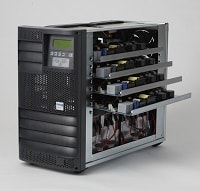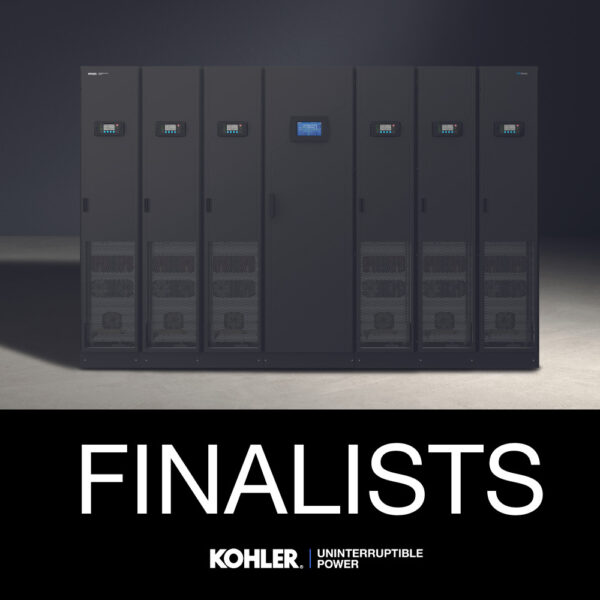KUP’s MINIPowerPLUS and KOHLER PW products are uninterruptible power supplies; as such, they have been designed, built and tested to comply with all regulatory requirements for UPSs. But what do these regulations actually call for? This post looks at EN 62040, which is a key part of these regulations. Further posts, to follow, will focus on other applicable legislation.
To comply with EN 62040, UPS systems must be safe, and EMC compliant in terms of susceptibility and emissions, while performing to users’ expectations. This post introduces one key standard – EN62040 – that UPS systems must comply with to demonstrate that they meet these criteria.
EN 60240 comprises three parts:
- EN 62040-1:2008 Uninterruptible power systems (UPS) – Part 1: General and safety requirements for UPS
- EN 62040-2:2006 Uninterruptible power systems (UPS) – Part 2: Electromagnetic compatibility (EMC) requirements
- EN 62040-3:2011 Uninterruptible power systems (UPS) – Part 3: Method of specifying the performance and test requirements
Part 1 – General and safety recommendations
This standard applies to uninterruptible power systems (UPS) with an electrical energy storage device in the DC link. It is used with EN 60950, ‘Safety of Information Technology equipment including electrical business equipment’. This is referred to in this standard as “RD” (reference document).
The UPS primary function as covered by this standard is to ensure continuity of an alternating power source. The UPS may also improve the quality of the power source by keeping it within specified characteristics.
This standard is applicable to UPSs which are movable, stationary, fixed or for building-in, for use in low-voltage distribution systems and intended to be installed in any operator accessible area or in restricted access locations as applicable. It specifies requirements to ensure safety for the operator and layman who may come into contact with the equipment and, where specifically stated, for service personnel.
This standard is intended to ensure the safety of installed UPS, both as a single UPS unit or as a system of interconnected UPS units, subject to installing, operating and maintenance as prescribed by the manufacturer.
This standard does not cover UPSs based on rotating machines.
KUP’s MINIPowerPLUS and KOHLER PW range of UPSs fit within the above description of uninterruptible power supplies, as they are static devices that use batteries for energy storage in their DC link. They provide power protection in terms of both continuity and quality. Accordingly, all products have been independently tested and certified to comply with EN 62040 Part 1.
Part 2 – Electromagnetic compatibility
This EMC standard applies to single UPSs intended for installation into any operator accessible area or in separated electrical locations, connected to either industrial or public low-voltage supply networks.
This EMC standard takes precedence over all aspects of the Generic standards and no additional testing is necessary. The requirements have been selected to ensure an adequate level of electromagnetic compatibility (EMC) for UPSs in public and industrial locations. These levels cannot, however, cover extreme cases which may occur in any location, but are extremely unlikely to do so.
It also allows for the differing test conditions necessary to encompass the range of UPS physical sizes and power ratings.
A UPS unit or system shall meet this standard’s relevant requirements as a standalone product. EMC phenomena produced by any customer’s load connected to the UPS equipment output shall not be considered.
Neither special installation environments nor UPS fault conditions are considered. The standard does not cover UPSs based on rotating machines.
KUP’s MINIPowerPLUS and KOHLER PW range of UPSs have been independently tested and found to comply with EN62040 Part 2 in terms of both emissions and susceptibility.
Part 3 – Performance
This standard applies to movable, stationary and fixed electronic uninterruptible power systems (UPSs) that deliver single or three-phase fixed frequency AC output voltage not exceeding 1000 VAC and that incorporate an energy storage system, generally connected through a DC link.
The UPS primary function as covered by this standard is to ensure continuity of an AC power source. The UPS may also improve the quality of the power source by keeping it within specified characteristics.
This standard’s performance requirements are for UPSs within the scope of EN 60240-1. It applies to UPSs with:
- Single or three-phase, fixed frequency, 50/60 Hz AC output voltage
- Single or three-phase input voltage
- Electrical energy storage device in the DC link, if not otherwise specified
- Rated voltage not exceeding 1000 VAC
- Movable, stationary or fixed equipment
The standard’s specifics include equipment characteristics, test methods and minimum performance levels.
The standards EN 62040 Part 1, Part 2 and Part 3 incorporate, by dated or undated reference, provisions from other publications. These normative references are cited at the appropriate places in the standards’ text.
Full documentation for all three parts of EN 62040 can be purchased online from BSI. In another post, we’ll look at the many other standards that affect UPSs in various ways.





